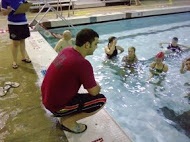
Swiftwater rescue is a technique mostly used by lifeguards to make rescues in whitewater river situations. This is a process that requires more technical skills that need to be learned. It is accompanied by some rules, special equipments and maneuvers are used to ensure there is a safe retrieval of a victim from dangerous waters. Traditionally, rescuers used ropes, anchoring mechanisms and other equipments to carry out successful rescue missions. However, in the modern days, rescuers use more hearty equipments and stronger tools to do the rescue. Most of the processes and equipments used utilize the theory of mechanical advantage. The lifeguards working in this type of rescue concentrate more on redirecting and repelling the water force because the rush of water in whitewater settings cannot be stopped by the common rescue means.
How lifeguards conduct Swiftwater rescue
- When the team of lifeguards is called to the scene of an emergency, the first thing they do is to make the identification of elements by labeling the operation zones. The zones are labeled, hot, warm, or cold. Each of the zones requires certain tools and responsibilities. The hot zone involves the entire water scene while the cold zone is the area that is beyond fifteen feet of the shoreline. On the other hand, the warm region refers to the region that is within fifteen feet of the shoreline.
- Next, the rescue team apply step by step checklist of probable scenarios whereby if one strategy fails they make use of the best technique in line. This helps to keep all the lifeguards on the swiftwater rescue alert on the kind of rescue that is being tried at a certain time, tools and the level of manpower needed in that specific rescue mission.
Other rescues conducted
Lifeguards on rescue mission must ensure that they navigate the empowering and unpredictable surge of water at all times. This can be extremely tricky and the requirements to get involved in such rescue mission even as a lifeguard are a bit stringent. The lifeguards in swiftwater rescue may also be called upon to carry out a live bait rescue. This is a situation where an unconscious victim must be taken away from the water. This process will involve moving the victim to safety and this is one of the most risky processes that lifeguards encounter. However, with proper training, many of the lifeguards in Canada have the ability to carry out even such complicated and risky swiftwater rescue.